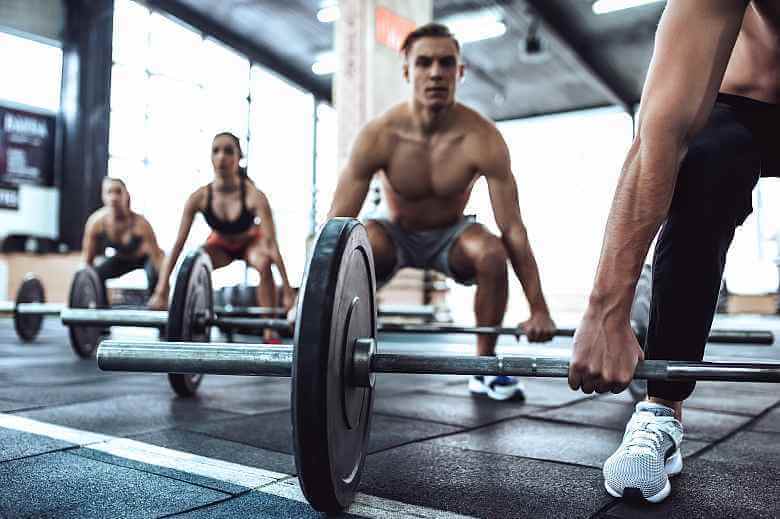Wondering why you’re struggling to lift? Have you checked your feet? No, we’re not talking about your stance or your form we’re talking about shoes. One of the most important pieces of advice we can give you for working out at the gym it would be to stop wearing running shoes when you’re hitting the weights to squat, deadlift, and lunge.
Somehow running shoes have become an all-purpose shoe for people in the gym and we don’t understand why. They have been specially designed to make running more comfortable and efficient and they are categorically bad for non-running things (including squats, deadlifts, and lunges).
So what makes a running shoe a running shoe?
For starters the cushioning, they are springy and have some serious with arch support all designed to absorb shock when your foot hits the ground. They are also built with a bit of give to accommodate changes in terrain as you run so you don’t break your ankle.
Then there’s the design and shape. Purposefully created to keep your foot in motion, running shoes have a curved bottom and a raised toe that helps rock your foot forward so you can push off during your gait cycle.
All of this adds up to a really great running shoe that has taken years to perfect but it’s basically the opposite of what you want when you’re lifting weights. You need a firm foundation and the ability for your whole foot to press into and engage against the floor. Running just won’t give you the level of stability you need to lift.
Is it really that bad?
When you squat, deadlift, or lunge wearing a running shoe, you’ll feel your feet move around a lot inside the shoe, and the shoe itself will move. There’s a dangerous side-to-side movement as well as some rocking action from front to back – you know because you should be running in them. If your body has to work to find and maintain stability on an unstable foundation, you lose power and make your lifts weaker.
If you’re the kind of person who feels pain in your knees during or after squatting and lunging, then this goes double for you. Squatting and lunging in unstable shoes can cause your knees to cave inward, which increases the pressure and your chance of injury.
Then what shoes do you wear?
When squatting, deadlifting, and doing lunges, you want shoes with a hard, sturdy sole, a flat bottom, and good support on the sides. The more stable your shoes, the more you can lift.
That doesn’t mean you have to go out and spend the big bucks on fancy or expensive specialized shoes for lifting (but you can if you want). But seriously; stop wearing running shoes when you grab the weights and bang out your lower body strength work. Invest in a good, stable, flat-bottomed pair of cross-training shoes that could save you from injury and help you smash those goals.




Leave a reply